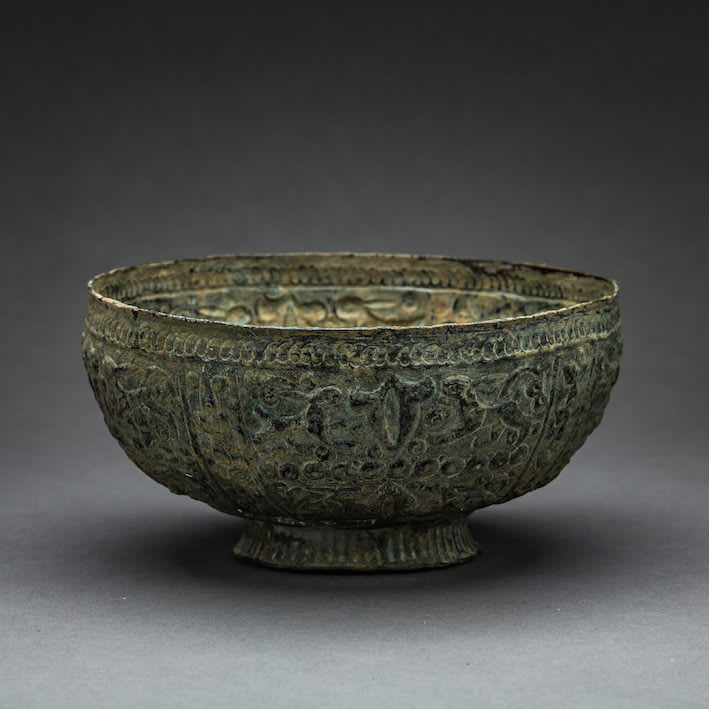Seljuk Repoussé High-Tin Bronze Footed Bowl, 11th Century CE - 12th Century CE
Bronze
8.9 x 17.3 cm
3 1/2 x 6 3/4 in
3 1/2 x 6 3/4 in
LK.001
The Seljuk period in the history of art extends for approximately two centuries from the Seljuk conquests in the second quarter of the 11th century to the establishment of the...
The Seljuk period in the history of art extends for approximately two centuries from the Seljuk conquests in the second quarter of the 11th century to the establishment of the Ilkhan dynasty in the second quarter of the 13th century. During this period, the centre of power within the Islamic world shifted from the Arab territories to Anatolia and Iran, with the traditional centres now residing in the Seljuk capitals; Merv, Nishapur, Rayy and Isfahan.
During the Seljuk period, metalwork was particularly widespread with extremely high levels of workmanship. Bronze was by far the most widely spread metal during the 11th and 12th centuries.
This Seljuk bowl consists of rounded sides on a short fluted foot, the sides, divided into two registers depicting pursuant hares and split palmettes on a scrolling vine ground. The method used in creating this relief bowl involved the hammering or punching a sheet metal from the back. The metal is usually hammered into a prepared mold, then final details are engraved on the front of the relief.
The Seljuk period was undoubtedly one of the most intensively creative periods in the history of the Islamic world. It displayed splendid achievements in every artistic field, with subtle differences from one region to the next.
During the Seljuk period, metalwork was particularly widespread with extremely high levels of workmanship. Bronze was by far the most widely spread metal during the 11th and 12th centuries.
This Seljuk bowl consists of rounded sides on a short fluted foot, the sides, divided into two registers depicting pursuant hares and split palmettes on a scrolling vine ground. The method used in creating this relief bowl involved the hammering or punching a sheet metal from the back. The metal is usually hammered into a prepared mold, then final details are engraved on the front of the relief.
The Seljuk period was undoubtedly one of the most intensively creative periods in the history of the Islamic world. It displayed splendid achievements in every artistic field, with subtle differences from one region to the next.



